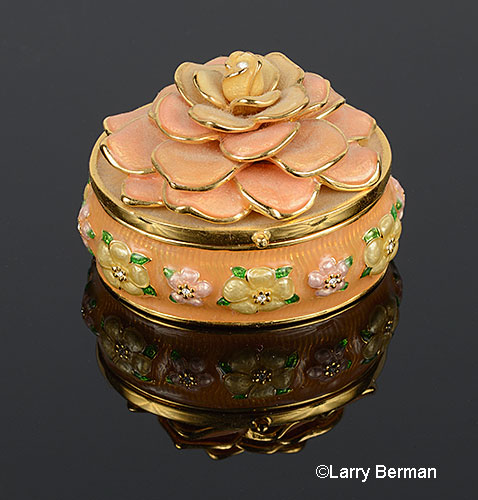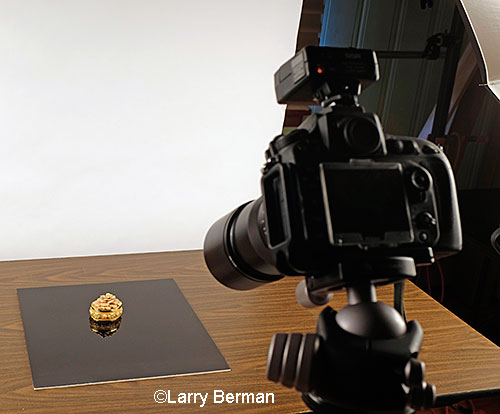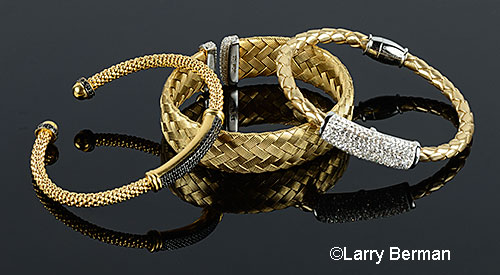Photographing Jewelry on Black Plexiglass
We’ve all seen (and maybe admired) this type of photograph. Jewelry laid out on a shiny black surface with a reflection underneath. And sometimes with a circular spot surrounding the piece.
A few years ago when I was first practicing photographing jewelry, I ordered a few pieces of black plexiglass to experiment with. Thinking the circular spot was coming from underneath, I ordered some very thin pieces cut 12 inches square. I quickly learned that you can’t light through black plexiglass (no matter how thin it is) as the light takes on a weird color because the plexiglass isn’t neutral color in density. In fact, someone once sent me a few jewelry images that were light from under the black plexiglass and doing any color correction turned the circular spot purple.
Knowing that the black plexiglass acts like a mirror, it’s important to position it to control what’s being reflected from the camera angle. A little experimenting to take this a step further, I tried reflecting white into the black plexiglass. I discovered it gave a wonderful creamy dark gray. I had originally tried it with black fabric but it turned the black plexiglass solid black, no different than shooting on black velvet.
White was the solution. White fabric proved difficult because every wrinkle could be seen reflected in the black. White seamless background paper was perfect. B&H Photo sells 26 inch by 12 yard rolls of seamless background paper for only $15. They offer three variations of white.
The lighting I used to photograph these examples is the same lighting I normally use when I photograph jewelry. Two studio strobes bounced into oversize white umbrellas. The large umbrellas gives me a soft wrapping light so the camera can be repositioned without having to move the lights.
For the photography I used a Nikon full frame (D800E) DSLR and a 100mm macro lens, stopped down to F11 and focus stacked to make sure the entire piece is in focus.
Some artists like this look for their jury images. Personally I prefer the look of the images you see on my photography example page where the pieces pop and the background recedes or disappears in the jurors minds. You want the juror to be blown away by the jewelry, not the photograph of the jewelry.
You can read more artwork photography tips on the web site,






